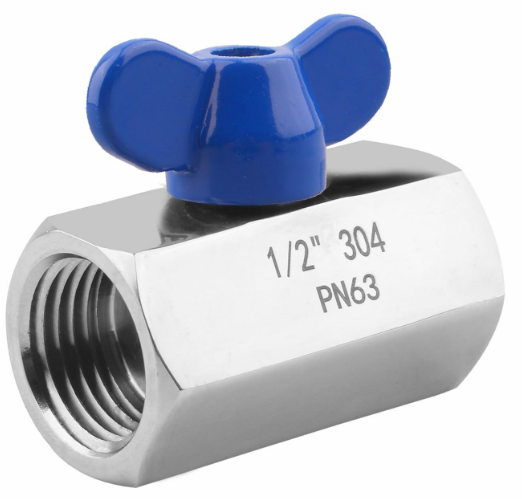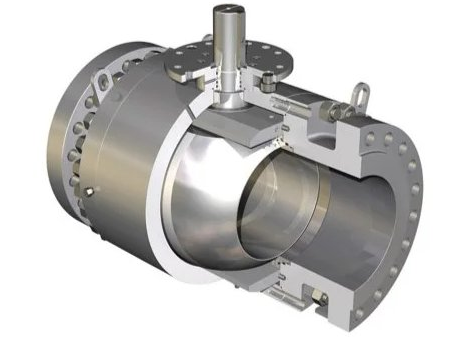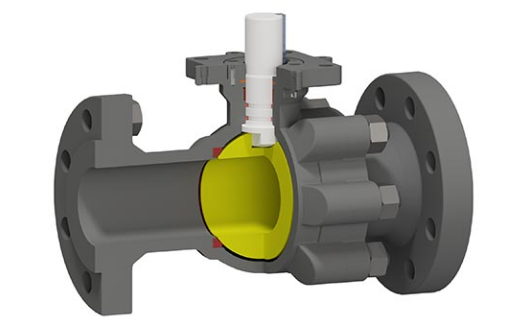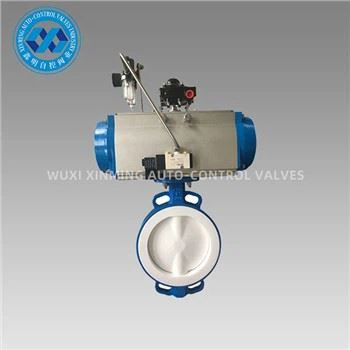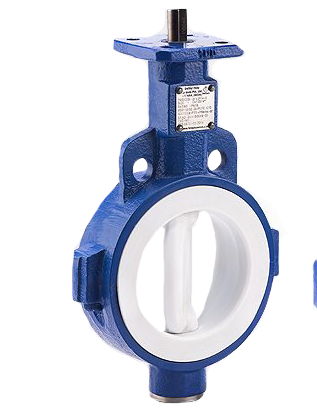Article Outline
1. Introduction to Pneumatic Actuator Accessories 2. Global Market Overview and Growth Projections 3. Key Accessory Types and Technical Specifications 4. Industry Trends and Technological Advancements 5. Application Analysis by Industry Sector 6. Competitive Landscape and Key Players 7. Future Prospects and Strategic Recommendations 8. Conclusion1. Introduction to Pneumatic Actuator Accessories
Pneumatic actuator accessories encompass a range of components that enhance the functionality, efficiency, and integration capabilities of pneumatic systems in industrial automation. These accessories include mounting brackets, linkage systems, position sensors, solenoid valves, air preparation units (filters, regulators, lubricators), and speed controllers, which collectively optimize actuator performance in demanding industrial environments. As critical enablers of modern automation, pneumatic actuators convert compressed air energy into mechanical motion and rely on these accessories for precise control, monitoring, and reliability.
The fundamental advantage of pneumatic systems lies in their simplicity, reliability, and cost-effectiveness for linear and rotary motion applications. Accessories enhance these core benefits by enabling precise positioning, feedback capabilities, and system diagnostics. Pneumatic actuator accessories have become increasingly sophisticated with the integration of IIoT (Industrial Internet of Things) capabilities, allowing for predictive maintenance and real-time performance optimization. The global shift toward industrial automation has positioned these components as critical elements in manufacturing efficiency improvements across automotive, electronics, food processing, and pharmaceutical sectors.
2. Global Market Overview and Growth Projections
The pneumatic actuator accessories market operates within the broader context of industrial automation components, demonstrating robust growth driven by manufacturing digitization and automation investments. Current market analysis reveals significant expansion with promising future projections.
| Market Segment | 2023 Market Size | 2030 Projection | CAGR (2024-2030) | Key Drivers |
|---|---|---|---|---|
| Global Pneumatic Tools & Accessories | $9.8 billion | $18.3 billion | 9.3% | Industrial automation, automotive manufacturing expansion |
| Industrial Automation Grippers | $988 million | $3.45 billion | 19.6% | Industry 4.0, robotics adoption |
| Pneumatic Actuators | Part of $9.8B | Part of $18.3B | ~10.5% | Energy efficiency, IIoT integration |
Regional analysis indicates Asia-Pacific as the fastest-growing market, with China leading both production and consumption. This dominance stems from massive manufacturing bases, favorable government policies supporting industrial automation, and increasing labor costs driving automation adoption. Europe and North America maintain significant market shares due to advanced manufacturing facilities and early adoption of Industry 4.0 technologies. The market exhibits moderate fragmentation, with the top three players (Stanley Black & Decker, Makita, and Atlas Copco) holding approximately 21% combined market share, reflecting opportunities for specialized manufacturers and technological innovators :cite[1]:cite[2]:cite[4].
Growth drivers include post-pandemic industrial recovery, increasing automation across sectors, and the transition toward smart factories. However, the market faces constraints from electric actuator competition in precision applications and compressed air infrastructure requirements. Despite this, pneumatic systems maintain advantages in power-to-weight ratio, explosion-proof operation, and cost-effectiveness for medium-duty applications, ensuring continued relevance in hybrid actuation environments.
3. Key Accessory Types and Technical Specifications
Pneumatic actuator accessories form a sophisticated ecosystem that enhances core actuator functionality. Understanding these components is essential for system optimization and reliability.
Mounting and Linkage Systems
These include precision brackets, clevis joints, and alignment couplings that ensure accurate actuator positioning and force transmission. High-grade alloy steel versions support heavy-duty applications in press machinery and material handling. Vibration-dampening designs have gained prominence for noise reduction and precision improvement in automated assembly lines.
Position Feedback Sensors
Magnetic reed switches, Hall-effect sensors, and potentiometric transducers provide real-time position data to control systems, enabling closed-loop control traditionally associated with electric systems. Modern variants feature IO-Link compatibility and embedded diagnostics, with accuracy levels up to ±0.1 mm for precision applications. Integration of these sensors has increased by approximately 40% in advanced manufacturing environments since 2020 :cite[3].
Valve and Control Accessories
This category includes solenoid valves with response times under 10ms, proportional flow controls for speed regulation, and pressure regulators maintaining ±0.5% stability. The emergence of all-in-one valve terminal systems with integrated electronics has simplified complex pneumatic circuit implementation.
Air Preparation Units
FRL (Filter-Regulator-Lubricator) combinations with auto-drain functions, particulate filtration to 5 microns, and precision pressure regulation ensure optimal air quality. Modern units feature contamination indicators and remote monitoring capabilities, reducing downtime by up to 30% in automotive manufacturing environments.
Force and Torque Accessories
Adjustable cushioning systems, overload clutches, and torque limiters protect both actuators and workpieces. Force ranges span from under 10N for electronic component handling to over 10,000N for heavy industrial applications :cite[3]. The 100-500N segment currently dominates industrial applications due to its relevance in material handling and assembly operations.
4. Industry Trends and Technological Advancements
The pneumatic actuator accessories landscape is evolving rapidly, driven by digitalization, sustainability requirements, and changing manufacturing paradigms.
Smart Pneumatics and IIoT Integration
Modern accessories increasingly feature embedded sensors and communication interfaces (IO-Link, Ethernet/IP, PROFINET) that enable predictive maintenance and process optimization. These smart components monitor parameters such as cycle counts, air consumption, seal wear, and response times, transmitting data to centralized control systems. Manufacturers report up to 40% reduction in unplanned downtime through implementation of smart pneumatic monitoring systems :cite[1]. The shift toward decentralized intelligence represents the next frontier, with processing capabilities distributed throughout pneumatic systems.
Energy Efficiency Innovations
With compressed air generation accounting for significant industrial energy consumption, accessories focusing on energy conservation have gained prominence. These include: pressure regulators with consumption-based control algorithms, leakage detection systems, and optimized flow controls that reduce air consumption by 15-25% without compromising performance. The market has seen a 35% increase in energy-efficient pneumatic accessories since 2021, driven by sustainability initiatives and cost reduction pressures :cite[6].
Material Science Advancements
Polymer composites and specialized coatings enhance component durability while reducing weight. Self-lubricating materials extend maintenance intervals, particularly in food and pharmaceutical applications where lubrication contamination presents risks. High-strength aluminum alloys have enabled weight reductions of up to 30% in mounting systems without compromising structural integrity.
Hybridization with Electric Systems
The industry is witnessing convergence between pneumatic and electric technologies, creating hybrid solutions that leverage the strengths of both. Pneumatic-electric hybrid grippers combine the speed and power density of pneumatics with the precision control of electric systems, demonstrating particular effectiveness in robotic material handling applications. This integration extends to control systems, with unified platforms managing both technologies.
5. Application Analysis by Industry Sector
Pneumatic actuator accessories serve diverse industrial applications, with specific requirements driving accessory selection and configuration.
| Industry | Market Share | Key Applications | Accessory Requirements | Growth Rate |
|---|---|---|---|---|
| Automotive Manufacturing | 39% | Assembly robotics, part handling, pressing operations | High cycle components, impact-resistant sensors | 8.5% |
| Electronics & Electrical | 18% | PCB handling, micro-component assembly, testing fixtures | Precision regulators, static-safe components | 12.2% |
| Food & Beverage | 15% | Packaging, filling, sorting, bottling lines | Stainless steel construction, hygienic design | 9.8% |
| Industrial Machinery | 12% | Material transfer, machine actuation, clamping | Heavy-duty mounts, position feedback | 7.9% |
| Pharmaceutical | 8% | Lab automation, blister packaging, sterile filling | Cleanroom compatibility, precision controls | 11.5% |
The automotive sector remains the dominant application, accounting for approximately 39% of pneumatic accessory consumption :cite[1]:cite[4]. This prominence stems from extensive automation in vehicle assembly processes, where pneumatic systems provide rapid, powerful actuation for welding, part handling, and component insertion. Accessories in this sector prioritize durability, with heavy-duty mounting systems and position sensors capable of withstanding vibration-intensive environments.
Electronics manufacturing represents the fastest-growing segment, driven by increasing automation in micro-component assembly. This sector demands ultra-clean compressed air systems with precise pressure regulation (±0.1 bar) and static-control measures to protect sensitive components. Miniaturized accessories with enhanced precision capabilities have seen particular growth in this segment.
Food and beverage applications present unique requirements for corrosion resistance and cleanability. Stainless steel mounting hardware, FDA-compliant lubricants, and hygienic design principles dominate this segment. Packaging operations increasingly utilize servo-pneumatic controls for improved flexibility in format changeovers.
6. Competitive Landscape and Key Players
The pneumatic actuator accessories market features a diverse competitive environment with global industrial conglomerates, specialized manufacturers, and regional players.
Market Structure and Share Analysis
The market exhibits moderate concentration, with the top three players—Stanley Black & Decker (11% share), Makita, and Atlas Copco—collectively holding approximately 21% market share :cite[1]:cite[4]. Beyond these leaders, over 40 significant competitors operate across global and regional markets. The competitive landscape varies by product segment, with mounting hardware showing greater fragmentation than sophisticated electronic accessories where technical barriers are higher.
Leading Manufacturers and Specializations
SMC Corporation: Global leader in pneumatic components with comprehensive accessory ecosystem including valves, sensors, and fittings. Their strength lies in miniaturized components for electronics and medical applications.
Festo: Technology leader in automation solutions, particularly strong in valve terminals and IIoT-enabled accessories with integrated diagnostics capabilities. Their product development focuses on energy efficiency and Industry 4.0 compatibility.
Parker Hannifin: Diverse industrial portfolio with strength in heavy-duty pneumatic systems for industrial machinery and mobile equipment. Their mounting systems and linkages are particularly prominent in North American markets.
Emerson (Ridgid): Focused on reliability in demanding environments, with robust position sensors and regulators for oil & gas applications. Their ASCO valve division provides sophisticated flow control solutions.
ABB: Automation powerhouse with growing pneumatic actuator division, particularly strong in integration with robotic systems. Their hybrid actuation solutions combine pneumatic power with electric control.
Strategic Approaches
Leading players increasingly pursue integrated system solutions rather than component-focused strategies. This approach combines actuators, accessories, and control electronics into pre-engineered packages that reduce engineering requirements for end-users. Partnerships with automation platform providers (Rockwell Automation, Siemens) have become crucial for market access. Recent years have seen accelerated acquisition activity, with over 15 significant transactions since 2020 as major players expand technological capabilities and geographic reach.
7. Future Prospects and Strategic Recommendations
The pneumatic actuator accessories market is positioned for substantial evolution through 2030, shaped by technological, economic, and environmental factors.
Growth Projections and Market Opportunities
The global pneumatic accessories market is projected to maintain a robust 9.3% CAGR through 2030, reaching $18.3 billion :cite[2]:cite[8]. Industrial automation grippers, a key application segment, show even stronger growth potential at 19.6% CAGR. Regional analysis indicates particular strength in Asian markets, where China's manufacturing modernization initiatives drive approximately 30% of global demand growth. The aftermarket segment presents significant opportunity, with replacement components and upgrade kits accounting for an estimated 40% of revenue.
Strategic Recommendations for Industry Participants
Smart Technology Integration: Prioritize development of IIoT-enabled accessories with embedded diagnostics and communication capabilities. These products typically command 20-30% price premiums while addressing critical customer pain points regarding downtime.
Energy Efficiency Focus: Develop and prominently feature energy-saving capabilities in product designs. Air consumption reduction has become a primary purchasing criterion across major industrial sectors.
Application-Specific Solutions: Create industry-tailored packages (e.g., cleanroom-compatible systems for pharma, anti-vibration mounts for automotive) rather than generic component offerings. Specialized solutions demonstrate deeper understanding of customer needs.
Hybridization Strategy: Develop interfaces and control systems that seamlessly integrate pneumatic and electric technologies. This approach addresses the growing trend toward right-sizing actuation methods to specific application requirements.
Aftermarket Optimization: Expand service offerings including predictive maintenance programs, remote monitoring subscriptions, and customized spare part packages. These services typically deliver 40-50% gross margins versus 25-35% for hardware alone.
Emerging Technologies and Disruptive Potential
Additive manufacturing presents disruptive potential for complex bracket and manifold production, enabling rapid prototyping and custom geometry without tooling investments. Digital twin technology is extending to pneumatic systems, allowing virtual commissioning and performance optimization before physical implementation. Material science innovations in self-healing polymers and nano-coatings promise extended service life in challenging environments. Artificial intelligence applications for predictive maintenance and optimization algorithms represent the next frontier beyond current IIoT capabilities.
8. Conclusion
Pneumatic actuator accessories represent a dynamic and evolving segment within industrial automation, demonstrating resilience through technological adaptation and continuous innovation. The market's projected growth to $18.3 billion by 2030 at 9.3% CAGR underscores its fundamental importance to modern manufacturing :cite[2]:cite[8]. This expansion is driven not by static demand for traditional components, but by continuous innovation that enhances pneumatic systems' capabilities, efficiency, and intelligence.
The future competitive landscape will favor manufacturers who successfully integrate smart technologies while addressing the dual imperatives of energy efficiency and application-specific optimization. Companies that develop comprehensive solutions combining hardware, software, and services will capture disproportionate value in this evolving market. The ongoing convergence of pneumatic and electric technologies presents particular opportunities for innovation in hybrid systems that leverage the complementary strengths of both technologies.
As industrial automation accelerates globally, pneumatic actuator accessories will continue to play a critical role in manufacturing efficiency, particularly in applications requiring cost-effective power density, reliability, and explosion safety. The industry's ability to embrace digital transformation while maintaining core pneumatic advantages will determine its trajectory through the coming decade, positioning pneumatic accessories as essential enablers of smart factory implementation worldwide.
References: Market data and statistics sourced from industry reports :cite[1]:cite[2]:cite[3]. Technological analysis based on manufacturer specifications and industry publications. Growth projections derived from compound annual growth rates reported in market research studies.
If you want to learn more about low-priced products, please visit the following website: www.xm-valveactuator.com







